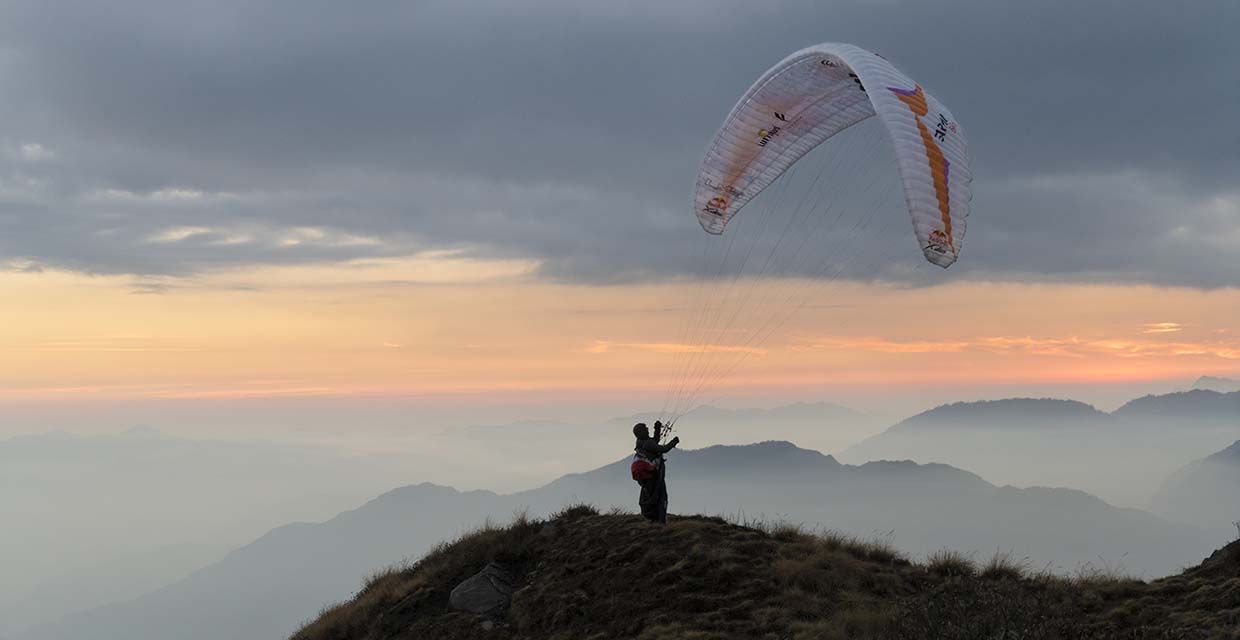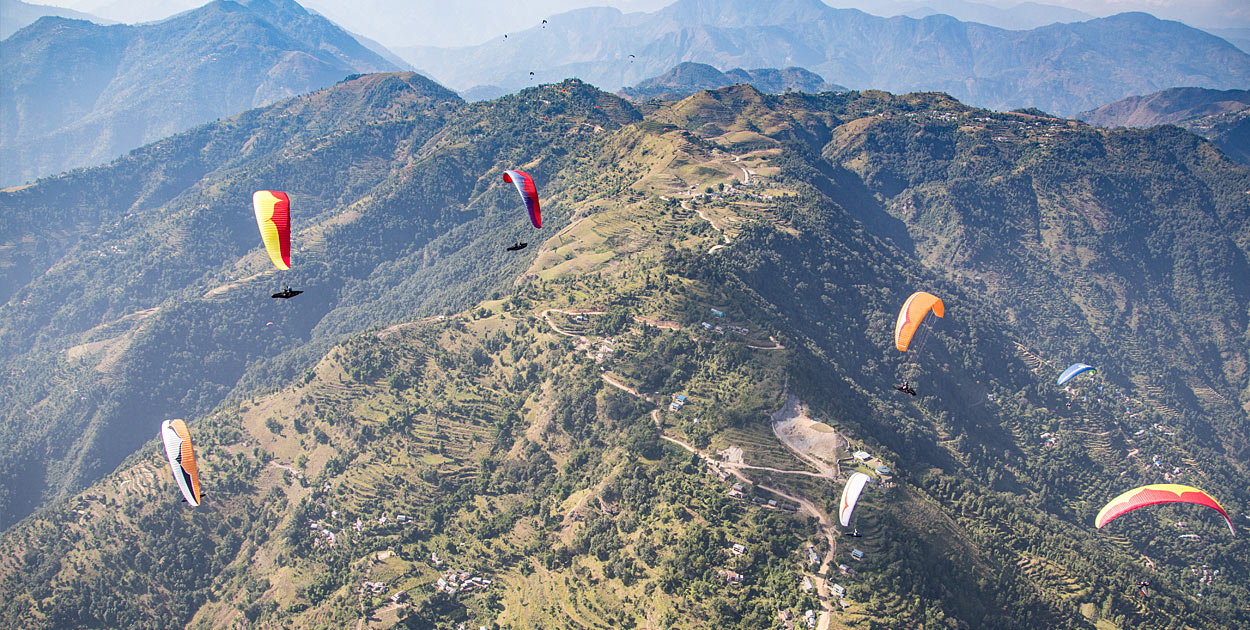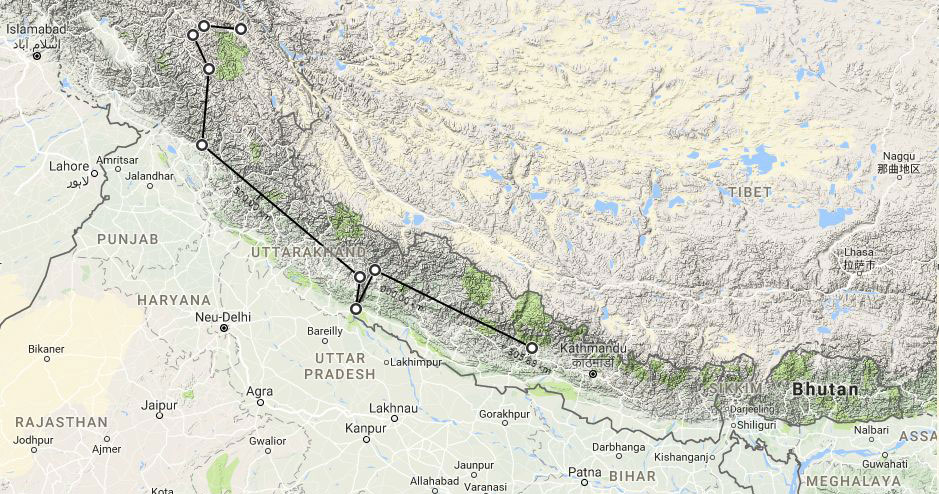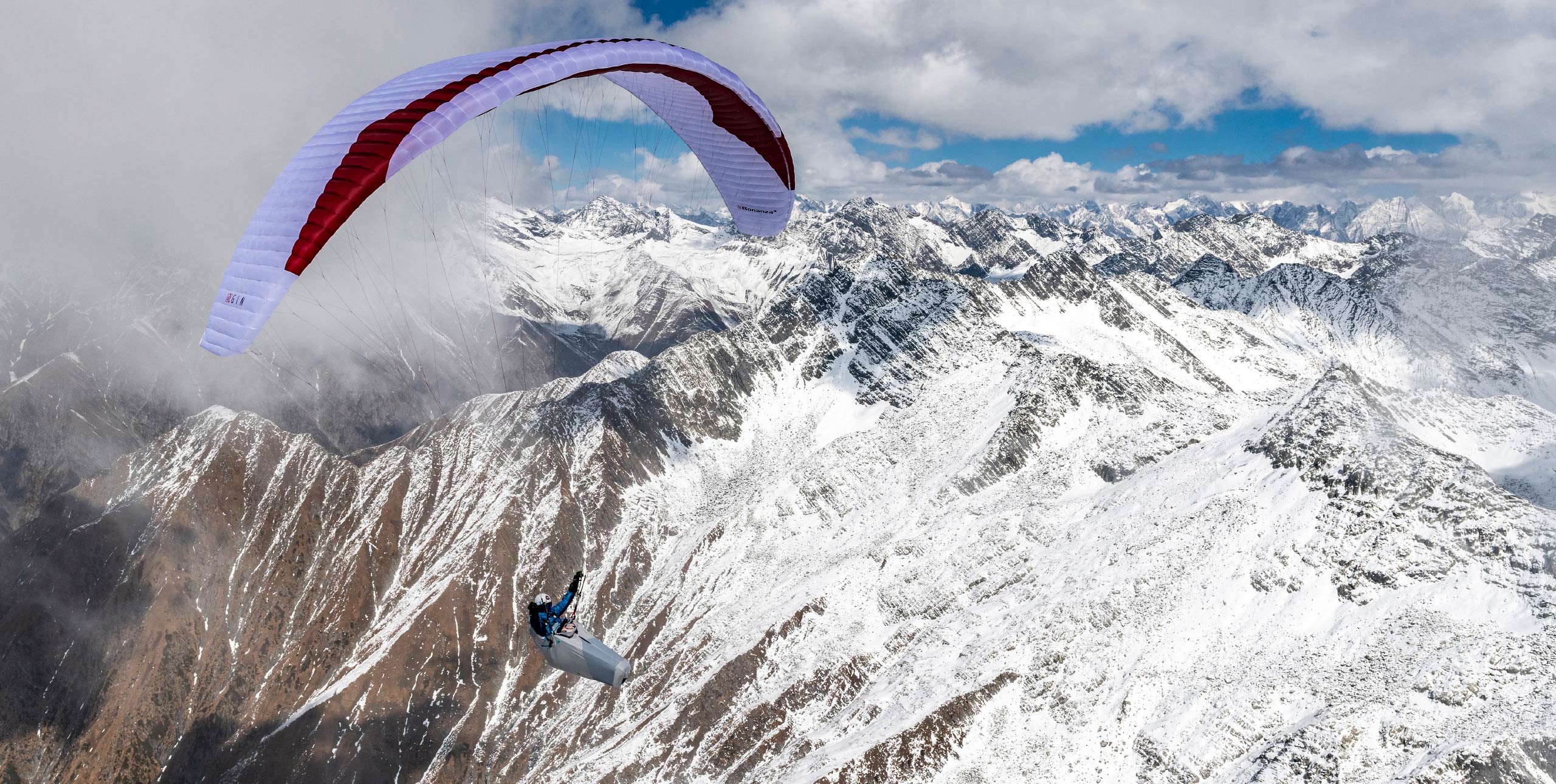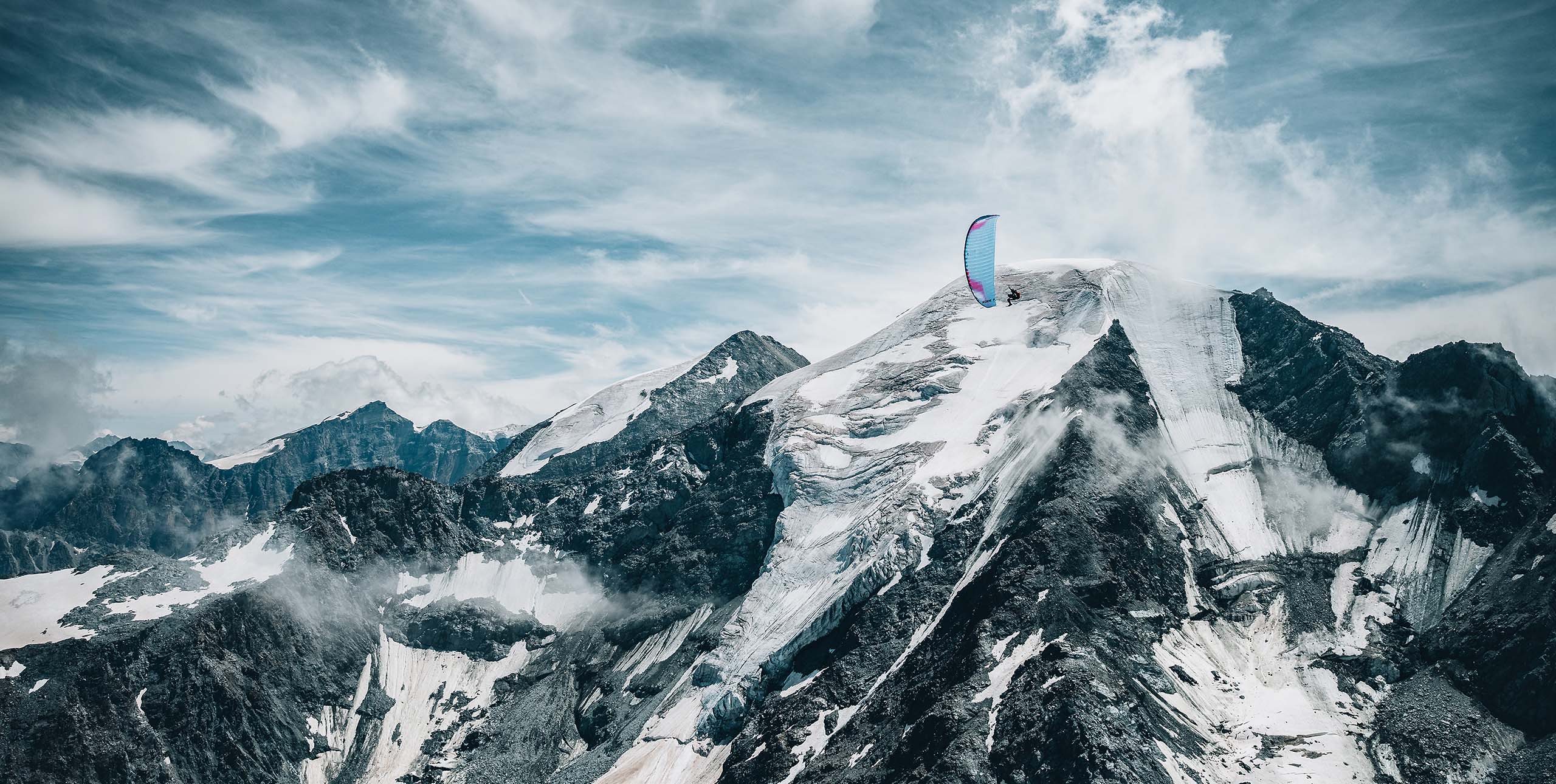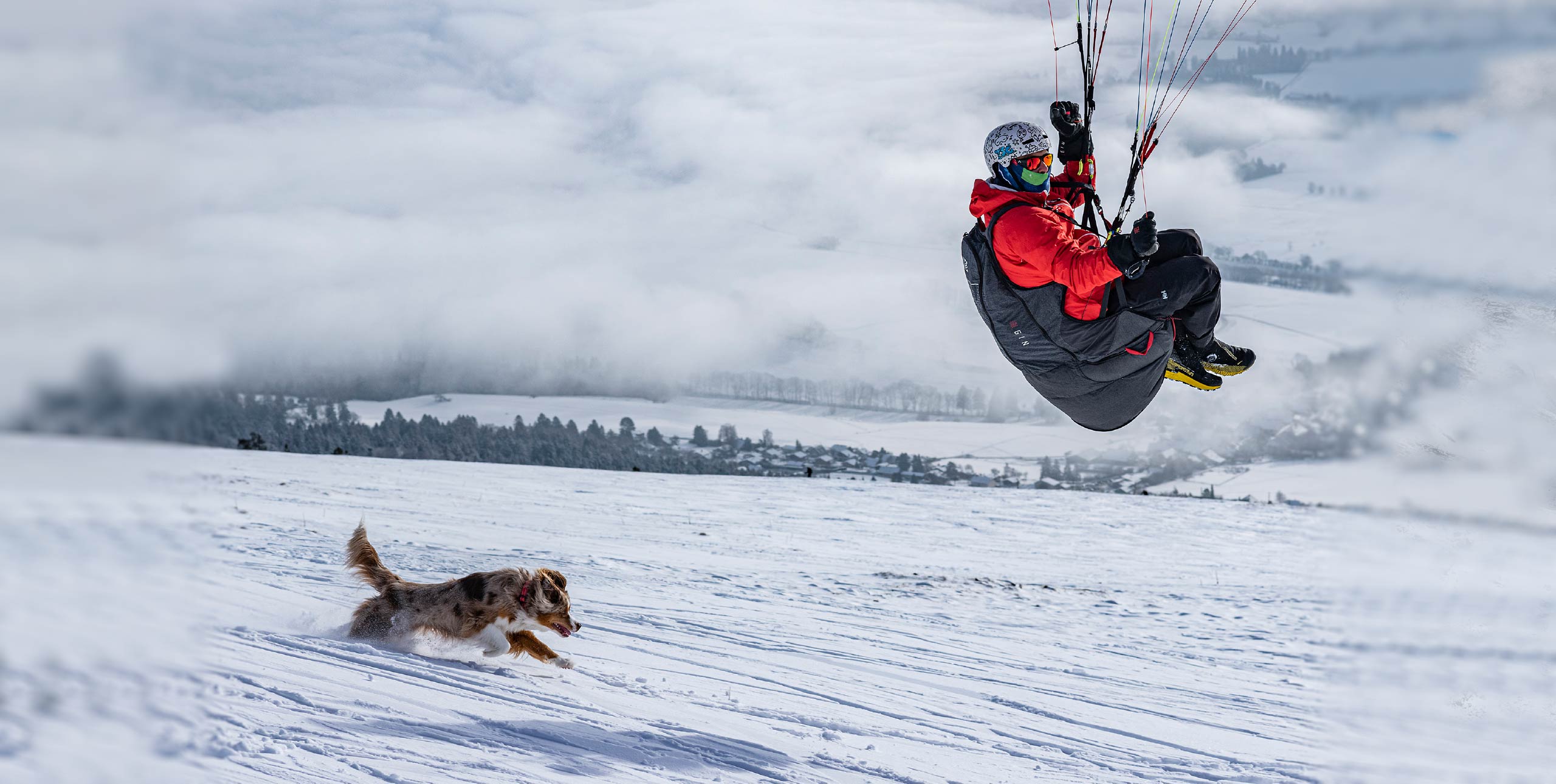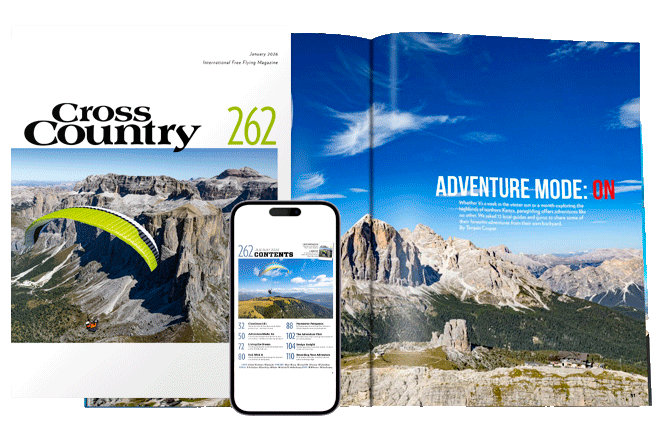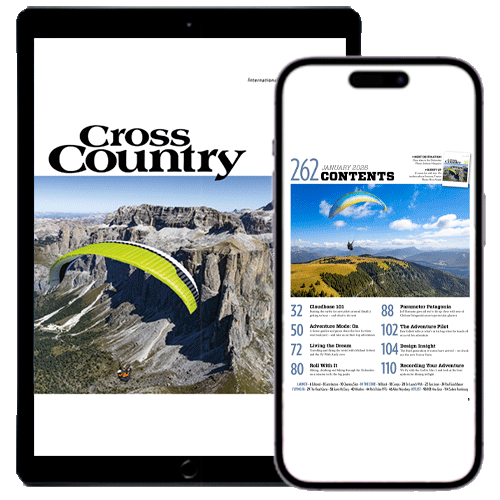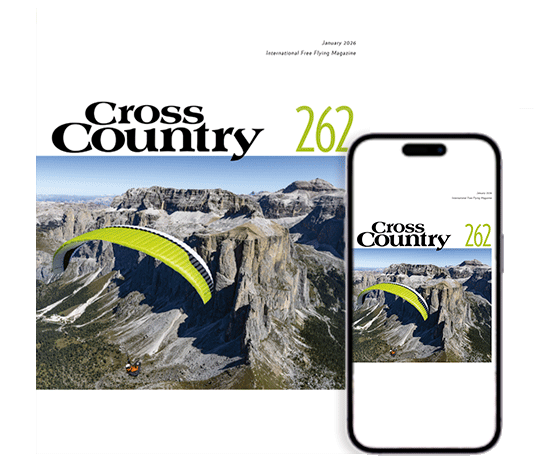
Paragliding World Champion Louise Crandal’s life takes an unexpected twist as she falls for a bird of prey
A dream I always thought would remain just that has actually materialised: I’ve got my own eagle and we fly together.
Two years ago I was working for a financial newspaper in Copenhagen. It was a miserable job, but wanting a career in journalism it was the way to go, and I accepted the fact that my free life as a competition pilot would undergo a severe change.
But being chained to an office chair was too unbearable and, unsurprisingly, it soon came to an end. Then I received an email from my brother: ’This might be something for you’, was all it said, and there was a link to the Himalayan Hawk Conservancy in Nepal.

Scott Mason and Louise with Sapana and Kanchee. Photos: Julian Andrews
English falconer Scott Mason and a couple of his friends had trained black kites to fly with paragliders in Pokhara. They were doing exactly what I had dreamt of for years. I had more or less given up on the thought because I couldn’t see how I could ever train a bird of prey and keep it in the back yard.
But after reading the website my idea was reborn in seconds. The next day I bought a ticket to Nepal and in February 2004 my daily life changed from dark offices in Copenhagen to the big birds and sunshine of the Himalayas.
I went for a month and spent ten days with Scott and Sapana, one of the birds from the film Parahawking. It was only an introduction to falconry and an appetizer to parahawking, but nevertheless I got a taste for the art and knew that my life had turned a corner.
I returned later that year and helped Scott train two young black kites. I intended to stay a month but got so drawn into the project and ’my’ lovely kite, Kanchee, that I ended up staying for three.
The project was extraordinary. With Scott’s knowledge of birds and my flying skills we made a great team. Most people thought we were nuts running around with birds all day long – perhaps we were – but we knew exactly what the end game was. Finally after weeks of training it finally happened.
Flying from the training hill with Kanchee behind me, I put out my fist and called her as I done so many times before. Suddenly she flew up and landed on my glove, looked me in the eye, took a piece of chicken then sat back and rested, letting me, the human, fly her, the bird, round the sky.
To her it seemed the most natural thing in the world: she trusted me, I was her friend; the connection was made. We flew for a while till she sensed we were low and took off again just before we landed.
That was just the beginning. Kanchee and I flew together almost every day, we fought off the wild birds together, took turns to find lift and each flight she would land on my fist to rest and be rewarded. With Scott’s and Kanchee’s help I had taken a humungous step into the universe of birds of prey and new ways of flying.
I left Nepal to fly the Worlds in Brazil and there was no doubt that I had learned something new from Kanchee and the other birds in Nepal. I flew better than ever before and out-thermalled most pilots.
Flying that close with birds of prey definitely added another dimension to thermic flying. Unfortunately things went much worse for Kanchee. She was killed by a steppe eagle shortly after I left Nepal and the adventure came to a sudden end. I had left my flying mate behind and lost her.
Yet my stay in Nepal surpassed everything I’d ever experienced before. It has opened my eyes towards understanding so many things. I was completely fascinated by understanding birds’ mentality, their ability to find lift, their flying skills. Not least of all I was loving working so closely with big birds of prey. Back in Denmark I wanted to continue working with birds.
’Don’t get an eagle’, was the advice I heard from everybody I asked, but by intricate means I ended up getting a two-year-old steppe eagle from Scotland. Cossack is the bird I had dreamt of ever since the idea of having my own feathered flying partner began to take form.
In the beginning he was so scared that he would fall off my fist out of pure fear, but with many hours, intensive training and great help from my boyfriend, Cossack underwent a radical change.
Six weeks after I got him he landed on my fist while I was in the air and thanks to a fantastic autumn this year we’ve been blessed with loads of flying days.
Cossack and I have become a team. Flying without him isn’t real flying for me anymore and if I let him fly alone on days when the wind is too strong for paragliders he shows a lot less interest in staying in the air for a long time.
He’s more or less like a dog now. He’ll follow me anywhere and when we fly he’s so confident and independent that he will even head off on his own and come back when he feels like it.
Lines are always a problem when it comes to flying with birds, but I’ve lost track of the number of times he has touched the lines without getting tangled.
He’ll fly so close to my feet that I have to bend my legs to miss him and he’ll only come into my fist when it suits him. So far we’ve only soared the Danish coasts, but next week we are off to Italy for some real flying. Steppe eagles are masters of thermalling and I’m sure he’ll revel in big air.
Read more: This article appeared within a special feature on flying with birds of prey in issue 102
• Got news? Send it to us at news@xccontent.local
Subscribe to the world’s favourite hang gliding and paragliding magazine


